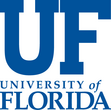(Please click the thumbnail or the title of each paper to access.)
abstract
Enabling surgeon-educators to create VR-training units promises greater variety, specialization and relevance of the units. It allows implementing variation
in technique, an important component of traditional surgical education, and to
create uncommon and specialized scenarios.
We report on a web-based authoring interface that allows surgeon-educators
to assemble simulation-ready pieces of VR anatomy and tools to quickly specify
new surgical scenarios. This interface has successfully been used by surgeoneducators to create laparoscopic training units for appendectomy, cholecystectomy and adrenalectomy.
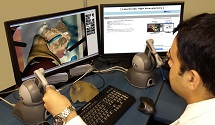
Surgeon-Authored Virtual Laparoscopic Adrenalectomy Module Is Judged Effective and Preferred Over Traditional Teaching Tools
Surgical Innovation ,
24,
72-81,
Nov
2017


abstract
Objective. The study assesses user acceptance and effectiveness of a surgeon-authored virtual reality (VR) training
module authored by surgeons using the Toolkit for Illustration of Procedures in Surgery (TIPS). Methods. Laparoscopic
adrenalectomy was selected to test the TIPS framework on an unusual and complex procedure. No commercial
simulation module exists to teach this procedure. A specialist surgeon authored the module, including force-feedback
interactive simulation, and designed a quiz to test knowledge of the key procedural steps. Five practicing surgeons,
with 15 to 24 years of experience, peer reviewed and tested the module. In all, 14 residents and 9 fellows trained
with the module and answered the quiz, preuse and postuse. Participants received an overview during Surgical Grand
Rounds session and a 20-minute one-on-one tutorial followed by 30 minutes of instruction in addition to a forcefeedback interactive simulation session. Additionally, in answering questionnaires, the trainees reflected on their
learning experience and their experience with the TIPS framework. Results. Correct quiz response rates on procedural
steps improved significantly postuse over preuse. In the questionnaire, 96% of the respondents stated that the TIPS
module prepares them well or very well for the adrenalectomy, and 87% indicated that the module successfully
teaches the steps of the procedure. All participants indicated that they preferred the module compared to training
using purely physical props, one-on-one teaching, medical atlases, and video recordings. Conclusions. Improved quiz
scores and endorsement by the participants of the TIPS adrenalectomy module establish the viability of surgeons
authoring VR training
Towards surgeon-authored VR training:
the scene-development cycle
Proceedings of Medicine Meets Virtual Reality (MMVR) 22 ,
1-6,
L.A., CA,
Apr.9-12
2016


abstract
Enabling surgeon-educators to themselves create virtual reality (VR) training units promises greater variety, specialization and relevance of the units.
This paper describes a software bridge that semi-automates the scene-generation
cycle, a key bottleneck in authoring, modeling and developing VR units. Augmenting
an open-source modeling environment with physical behavior attachment and
collision specifications yields single-click testing of the full force-feedback enabled
anatomical scene
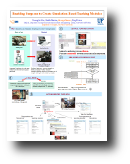
Enabling Surgeons to Create Simulation-Based Teaching Modules
Proceedings of Medicine Meets Virtual Reality (MMVR) 18 ,
163,
723-729,
Newport Beach, CA,
Feb.8-12
2011


abstract
To broaden the use of simulation for teaching, in particular of new procedures and of low-volume procedures, we propose an environment and workflow that allows surgeon-educators create teaching modules. Our challenge is to make the simulation tools accessible, modifiable and sharable by users with moderate computer and VR experience. Our contribution is a workflow that promotes consistency between instructional material and measured criteria and makes the authoring process efficient, both for the surgeon, and for computer scientists supporting the simulation environment.
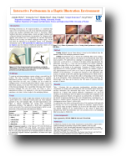
Interactive Peritoneum in a Haptic Surgery Illustration Environment
Proceedings of Medicine Meets Virtual Reality (MMVR) 17 ,
142,
221-223,
Long Beach, CA,
Jan.19-22
2009


abstract
We describe a fully interactive, low-overhead and robust peritoneum representation allowing for probing and cutting. The peritoneum implementation has been tested within a surgical illustration environment.
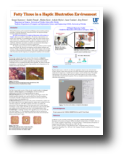
Fatty Tissue in a Haptic Illustration Environment
Proceedings of Medicine Meets Virtual Reality (MMVR) 16
,
132,
384-386,
Long Beach, CA,
Jan.29-Feb.1
2008






abstract
Modeling soft tissue for surgery simulation is a challenging task due to the complex way
that the tissue can deform and interact with virtual surgical tools manipulated by user.
One soft tissue that is ubiquitous but often not modeled, is fatty tissue. Here we present
a novel fatty tissue model based on the mass-spring system on the Graphics Processing Unit (GPU)
as part of our Toolkit for Illustration of Procedures in Surgery (TIPS).
The user can interact with the fatty tissue in real time via a handheld haptic stylus that
represents a virtual surgical tool in TIPS environment. The currently available interactions are palpation, grasp, and cut.
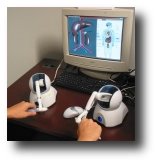
A Haptic-enabled Toolkit for Illustration of Procedures in Surgery (TIPS)
Proceedings of Medicine Meets Virtual Reality (MMVR) 15
,
125,
209-214,
Long Beach, CA,
Feb.6-9
2007






abstract
Good surgical training depends greatly on case experiences that have been difficult
to model in software since current training technology does not provide the flexibility
to teach and practice uncommon procedures, or to adjust a training scenario on the fly.
The TIPS kit aims to overcome these limitations. To the expert, it presents visual and haptic tools
that make illustrating procedures easy and can model unusual anatomic variations.
For a non-specialist, it provides a locally customized learning environment and
repeated practice in a safe environment. We used the toolkit to illustrate removal of the adrenal gland.
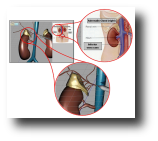
Developing a Multimedia Environment for Customized Teaching of an Adrenalectomy
Surgical Endoscopy,
21,
6,
1012-1016,
Jun. 2007
abstract
We have developed a computer based simulation process which allows
a surgical expert to create a customized operative environment.
This virtual environment, the Toolkit for Illustration of Procedures in Surgery (3D TIPS),
is deployed on a low-cost computer system and requires minimal training for the programmer.
The learner can be engaged in training immediately and the educator can modify the system
and annotate the procedure to highlight specific points using video clips, operative images,
and the like.
A laparoscopic adrenalectomy is presented as a proof of concept in the accompanying article.
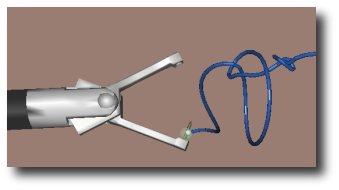
Simulation for Training with the Autosuture™ Endo Stitch™ Device
Surgical Innovation,
13
4,
283-287,
Dec.
2006
abstract
The rapid development and deployment of novel laparoscopic instruments
present the surgical educator and trainee with a significant challenge.
Several useful instruments have been particularly difficult to teach the novice.
We have developed a platform that allows the combination of the actual instrument
handle with a virtual re-creation of the instrument tip. We chose the Autosuture™
Endo Stitch™ device as the prototypical instrument because it satisfies
our subjective experience of “useful, but hard to teach.”
A software package was developed to support the re-creation of the needle
and suture that accompany the device. The apparatus has haptic capabilities
and collision detection so that the needle driver is “aware” of suture and instrument contact.
The developed virtual environment allows re-creation of the necessary motion to simulate
the instrument, the trainee can use the actual instrument handle, and the system can be
altered to accommodate other instruments.
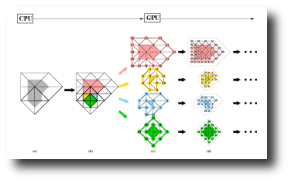
Exploiting Graphics Hardware for Haptic Authoring
Proceedings of Medicine Meets Virtual Reality (MMVR) 14
,
119,
255-260,
Long Beach, CA,
Jan.25-27
2006




abstract
Real-time, plausible visual and haptic feedback of deformable objects without shape artifacts
is important in surgical simulation environments to avoid distracting the user.
We propose to leverage highly parallel stream processing, available on the newest
generation graphics cards, to increase the level of both visual and haptic fidelity.
We implemented this as part of the University of Florida's haptic surgical authoring kit.
last modified Mar.17, 2011
